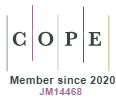Hospital Efficiency Assessment Through Data Envelopment Analysis
DOI:
https://doi.org/10.5585/rgss.v5i2.248Keywords:
Hospital administration, Data Envelopment Analysis, Efficiency, Health Unic System, Public HealthAbstract
Interest in analyzing the efficiency of hospitals and also the services provided from the use of public resources is nonstop, given the magnitude of the resources used, which are generally scarce, and the complexity involved in the provision of health care service. In this sense, the study aimed to evaluate, using data envelopment analysis (DEA), the productive efficiency of hospitals affiliated to the Unified Health System (SUS) in Southern Brazil, by way of a documentary, descriptive, retrospective and quantitative approach research. A sample of 139 hospitals located in cities with more than 100 thousand inhabitants in the states of Paraná, Rio Grande do Sul and Santa Catarina was analysed. In order to ensure better comparative results, the Clusters technique was applied to groups with similar municipalities as their inputs. The results show that among the hospitals analyzed in three groups, the maximum efficiency scores achieved were 34% of Santa Catarina hospitals, 49% of Paraná hospitals and 35% of Rio Grande hospitals. It can also be inferred that 41% of the hospitals surveyed are efficient and use efficiently the physical and personal resources available to the population's care through the SUS. Because no significant discrepancies were identified as to the scores efficiency in inefficient hospitals, it was found that most of them are near to efficiency.Downloads
Downloads
Published
How to Cite
Issue
Section
License
Copyright (c) 2019 Revista de Gestão em Sistemas de Saúde – RGSS

This work is licensed under a Creative Commons Attribution-NonCommercial-NoDerivatives 4.0 International License.
Autores mantém os direitos autorais e concedem à revista o direito de primeira publicação, com o trabalho simultaneamente licenciado sob a Creative Commons Atribuição - Não comercial - Compartilhar igual 4.0 Internacional que permite o compartilhamento do trabalho com reconhecimento da autoria e publicação inicial nesta revista.
Autores têm autorização para assumir contratos adicionais separadamente, para distribuição não-exclusiva da versão do trabalho publicada nesta revista (ex.: publicar em repositório institucional ou como capítulo de livro), com reconhecimento de autoria e publicação inicial nesta revista.
Autores têm permissão e são estimulados a publicar e distribuir seu trabalho online (ex.: em repositórios institucionais ou na sua página pessoal) a qualquer ponto antes ou durante o processo editorial, já que isso pode gerar alterações produtivas, bem como aumentar o impacto e a citação do trabalho publicado (Veja O Efeito do Acesso Livre) em http://opcit.eprints.org/oacitation-biblio.html


